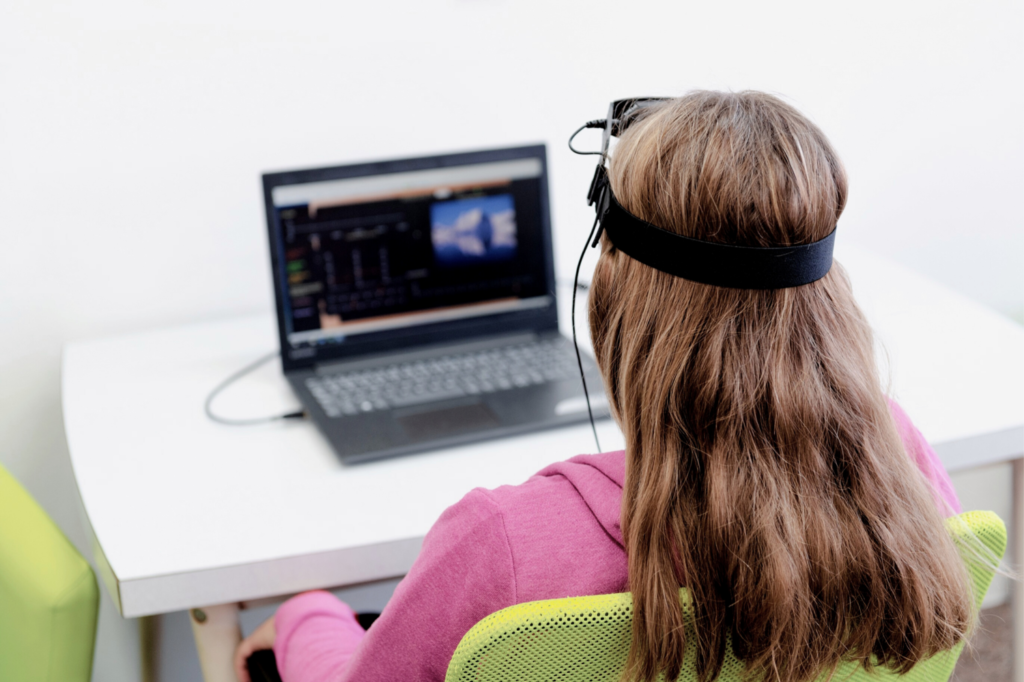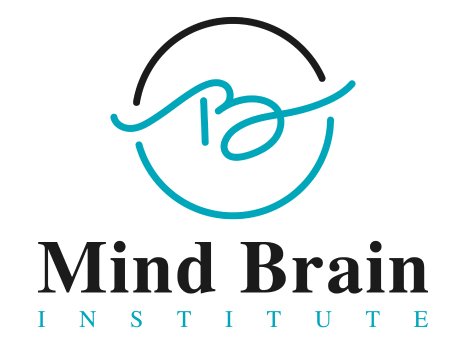Neurofeedback
At Mind Brain TMS, our mission is to provide innovative and effective treatments to support your mental health journey. We are thrilled to announce the addition of Neurofeedback Therapy to our range of services. This advanced, non-invasive treatment empowers you to optimize your brain function and improve your quality of life.
What Is Neurofeedback?

Neurofeedback, also known as EEG biofeedback, is a scientifically proven therapy that trains your brain to regulate its own activity. By monitoring brainwave patterns in real-time, neurofeedback provides instant feedback, helping you develop healthier brain function. This drug-free approach leverages your brain’s natural ability to adapt and self-regulate.
Make Appointment
How Does Neurofeedback Work?
Initial Assessment
We begin with a comprehensive evaluation to understand your unique brain activity and identify areas of dysregulation with QEEG.Sensor Placement
Non-invasive sensors are gently placed on your scalp to measure brainwaves.Real-Time Feedback
As you engage in interactive activities or watch visual displays, the system provides immediate feedback on your brain’s performance.Training Sessions
Over a series of sessions, your brain learns to adjust its activity, leading to improved mental function and symptom reduction.
Benefits of Neurofeedback
Reduce Anxiety and Depression: Alleviate symptoms by promoting balanced brain activity.
Enhance Focus and Attention: Improve cognitive performance, particularly beneficial for ADHD.
Manage Stress: Learn to control stress responses for a calmer mind.
Improve Sleep Quality: Regulate sleep patterns for restorative rest.
Boost Emotional Regulation: Gain better control over mood swings and emotional responses.
Conditions Treated with Neurofeedback
Anxiety Disorders
Depression
Attention Deficit Hyperactivity Disorder (ADHD)
Post-Traumatic Stress Disorder (PTSD)
Sleep Disorders
Chronic Pain and Migraines
Autism Spectrum Disorders
Traumatic Brain Injury (TBI)
Why Choose Mind Brain TMS for Neurofeedback?
Expert Team: Our licensed clinicians specialize in neurofeedback and mental health therapies.
Personalized Care: Treatment plans tailored to your specific needs and goals.
State-of-the-Art Technology: Utilizing the latest neurofeedback equipment for optimal results.
Holistic Approach: Integrated care that complements our existing TMS and psychotherapy services.
Proven Results: Evidence-based treatments backed by scientific research.
Your Neurofeedback Journey
Schedule a Consultation
Contact us to discuss your symptoms and treatment options.Customized Treatment Plan
We’ll design a neurofeedback program aligned with your objectives.Begin Therapy Sessions
Engage in regular sessions in a comfortable, supportive environment.Monitor Progress
We’ll track your improvements and adjust the plan as needed.Achieve Optimal Well-being
Experience the transformative benefits of a well-regulated brain.
Take the First Step Toward Better Brain Health
Embark on a path to enhanced mental clarity, emotional balance, and overall well-being with neurofeedback therapy at Mind Brain TMS. Our dedicated team is here to support you every step of the way.
Neurofeedback Treatment FAQ
Neurofeedback is a non‑invasive, computer‑assisted form of brain training that measures your brainwave activity in real time and provides feedback (visual or auditory) to reinforce healthier brain patterns. It is designed to help the brain self‑regulate, improving symptoms related to attention, mood, sleep, and stress.
Quantitative EEG (QEEG) brain mapping is a painless, 24‑sensor assessment that records your brain’s electrical activity and compares it to age‑matched norms. This “brain map” pinpoints exactly which regions and brainwave frequencies are under‑ or over‑active, identifying the neurological basis of your symptoms before treatment begins.
You’ll wear an EEG cap for about 20–30 minutes while sitting quietly with eyes open and closed. The recorded data are processed through an FDA‑approved normative database to generate a detailed report showing areas of dysregulation and specific brainwave imbalances.
The QEEG recording itself takes approximately 20 minutes. Including preparation, data analysis, and clinician review, plan for a total appointment time of 45–60 minutes.
Based on your QEEG report, we design targeted neurofeedback protocols that focus on the exact brain regions and frequency bands (e.g., excessive theta in frontal lobes) needing adjustment. This personalized approach maximizes treatment effectiveness by “rewarding” your brain when it shifts toward healthier patterns.
Sensors are placed on scalp sites identified in your brain map. You then watch a movie or play a simple video game that responds (pauses, dims, or plays) according to your brainwave activity. Over time, this feedback trains your brain toward optimal functioning.
Most patients notice initial changes within 5–10 sessions; lasting improvement generally requires 20–40 sessions. The exact number varies based on condition severity, individual responsiveness, and treatment goals.
Evidence supports neurofeedback for ADHD, anxiety, depression, insomnia, migraines, PTSD, traumatic brain injury, learning disorders, and other brain‑based conditions.
Yes. Neurofeedback and QEEG mapping are non‑invasive, painless, and have no known long‑term side effects. Occasionally patients experience brief, mild changes in mood or sleep as the brain adjusts.
Progress is monitored objectively through follow‑up QEEG brain maps and subjectively via symptom rating scales. Improvements in targeted brainwave patterns typically correlate with clinical symptom relief.
Yes—most patients start treatment while on current medications. As your brain function improves, medication reductions may be possible under your prescribing physician’s guidance.
Schedule an initial consultation to review your medical history, discuss goals, and arrange your QEEG brain mapping assessment. From there, we’ll develop a personalized neurofeedback plan tailored to your brain’s unique profile.

